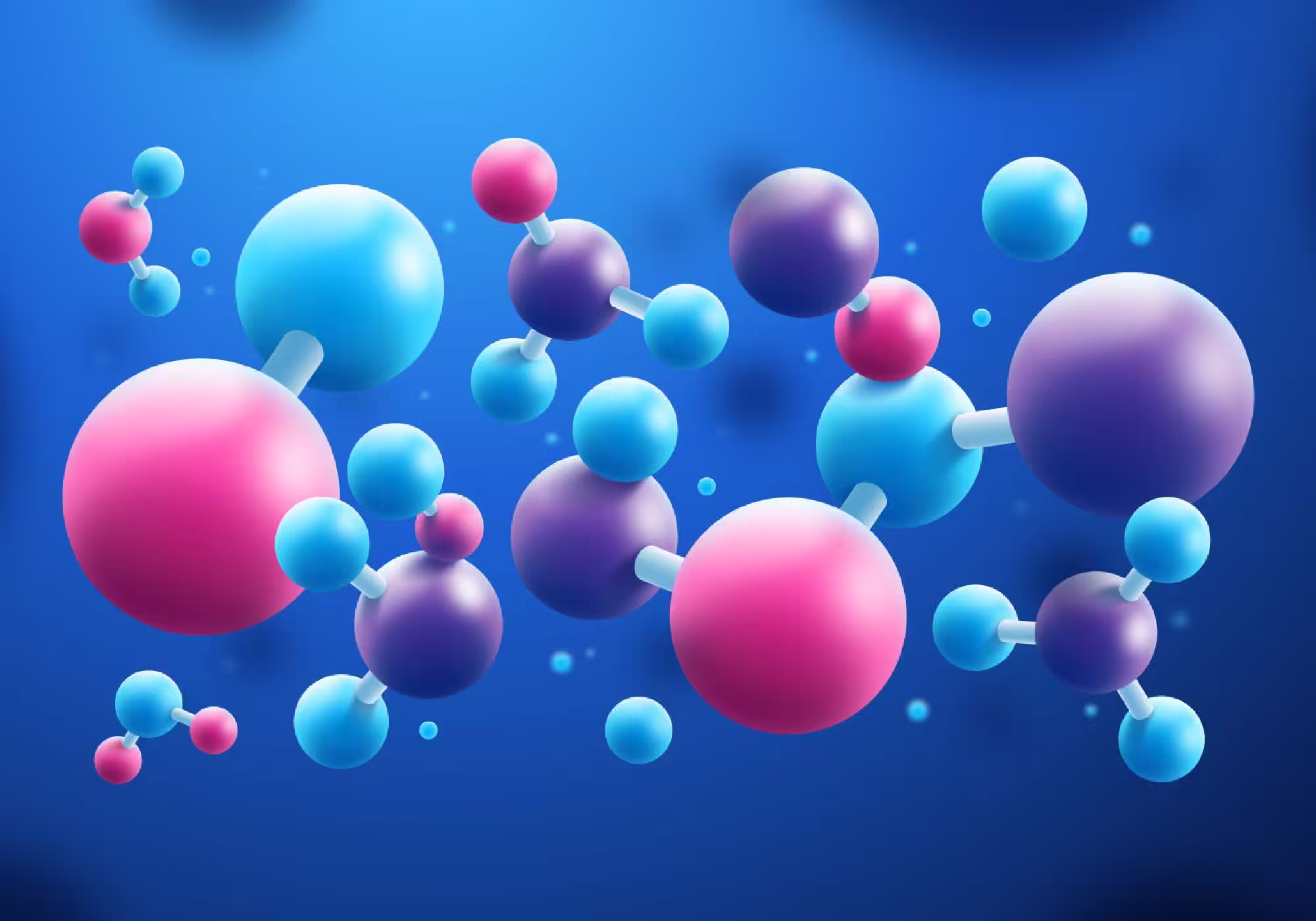Thermodynamics serves as the foundation of physical chemistry, influencing everything from basic reactions to intricate chemical processes. Without thermodynamics, we would lack insight into how energy transformations propel chemical reactions or why some reactions happen spontaneously while others do not. In this article, we will delve into the fundamental principles of thermodynamics in physical chemistry and examine how they affect the science that plays a role in our everyday lives. What is Thermodynamics? Basically, thermodynamics deals with energy and its transformations. As a technique in physical chemistry, it underlies the concept of heat and work interactions that distinguish chemical reactions. Thermodynamic principles explain why one reaction absorbs heat and another gives off heat or, more generally, whatever energy transformation alters the course of the reaction. Basic Laws of Thermodynamics Thermodynamics is based on four essential laws that describe the behavior of energy in any system. 1. Zeroth Law The zeroth law simply states that if two systems are in equilibrium with a third system, then they are also in equilibrium with each other. This is what is needed to ensure that scientists can accurately measure temperature, furthering the understanding of chemical reactions. 2. First Law The first is energy conservation. In other words, energy can neither be created nor destroyed, but can only be converted from one form to another. Therefore, as far as chemical reactions are concerned, the total energy of the system is the same at the beginning and end of the reaction. For example, in combustion, while the chemical energy within the fuel is converted into heat and light, its energy content simply remains unchanged. 3. Second Law The second law deals with the concept of entropy – the measure of disorder in a system – and provides an explanation for why natural processes generally increase the total entropy within a system. It serves as the basis for explaining why some chemical reactions cannot be run backwards and why, more often than not, the system descends into chaos. 4. Third Law The third law of thermodynamics states that as a system approaches absolute zero, its entropy approaches a constant minimum value. This is of little practical use because absolute zero can never be achieved. Instead, it enables the chemist to understand what is happening in a system at very low temperatures. Importance of Thermodynamics in Physical Chemistry Thermodynamics plays a very significant role in explaining chemical reactions and the outcome of those reactions. For example, it will predict whether a reaction, positive or negative, will happen in a molecular interaction; in that thought, one can go on to predict how much energy one expects to be absorbed or released. This information is essential in laboratory experiments, industrial applications, and even natural processes that these laws regulate crucial life-sustaining reactions. Gibbs Free Energy in Reactions It is also one of the key elements in thermodynamics and allows chemists to determine whether a reaction is spontaneous or not. A reaction that can be spontaneous means that the concept has a negative change in energy, but a reaction that requires a supply of energy is considered to have a positive sign. Of course, this theory proves valuable for physical chemists in that they can predict the behavior of reactions not only in the laboratory but also in industrial processes. Entropy and Its Role Entropy is an abstract concept, but it simply explains why systems evolve from order to disorder. In chemistry, entropy explains why ice melts, gases expand, and why certain reactions occur spontaneously without requiring input energy. It gives the chemist information about the direction of chemical reactions and the states of the system over time. Chemical Equilibrium Chemical equilibrium is achieved when the rate of the forward reaction matches the rate of the reverse reaction. Thermodynamics is important in this context, as it provides the framework for estimating the state of equilibrium. By analyzing energy changes and entropy, chemists can identify the conditions that allow reactions to reach and maintain equilibrium. Applications of Thermodynamics Thermodynamics plays a very fundamental role in many applications of chemistry and industry. In fact, the principles of thermodynamics play a somewhat essential role in the development of more efficient processes in the chemical field, reducing the amount of energy used and waste. An example of this is the large development base for heat engines and refrigeration systems. For example, this science of thermodynamics helps scientists predict the outcome of reactions carried out in the laboratory, saving time and resources. FAQs 1. What is the role of entropy in thermodynamics? Entropy refers to the level of disorder or irregularity within a system. It is essential for predicting how chemical reactions will proceed and for understanding how energy is distributed. 2. How do the laws of thermodynamics apply to chemical reactions? The laws of thermodynamics provide chemists with information about energy conservation, the role of entropy in reactions, and the conditions necessary for reactions to occur spontaneously. 3. Why is Gibbs free energy important in chemistry? Gibbs free energy means a lot to chemists because it gives them an idea of whether a reaction can be spontaneous or it requires some extra energy. This concept is actually quite basic in understanding the spontaneity of reactions. References
Difference Between Organic and Inorganic Chemistry and Improve Your Science Skills
Chemistry is the study of matter and its transformations, and it is essential to understand the natural world. There are many branches of chemistry, but two of the most important of them are organic and inorganic chemistry. While both fields focus on the study of chemical compounds, their differences are essential for understanding the wide range of materials we encounter every day. Today, we will discuss the major differences between organic and inorganic chemistry and why it is essential to know them. Definition and Scope Organic Chemistry Organic chemistry revolves around the study of carbon-based compounds. It contains essential molecules necessary for life, such as carbohydrates, proteins, and fats. Since the foundation of life itself relies on chemical interactions, predominantly with organic molecules, organic chemistry is crucial for scientists. Carbon has the unique ability to form stable bonds with elements like hydrogen, oxygen, and nitrogen, which allows it to create a large collection of molecules. These compounds are not only essential for biological processes but are also significant as the building blocks for materials like plastics, dyes, and synthetic fibers used in various industries. Inorganic Chemistry Inorganic chemistry involves compounds that are not carbon containing. These materials include minerals, metals, and salts. There is some similarity: for example, organometallic compounds combine elements from both organic and inorganic substances. However, in the most general terms, inorganic chemistry deals with less complex structures than those found in organic chemistry. The field of science is important in understanding everything from minerals within the Earth’s crust to the catalysts used in industrial processes. Chemical Reactions Organic Chemistry Reactions Organic chemistry involves many specific types of reactions, most of them involve functional groups (groups of atoms within molecules with distinct properties). These reactions include: These reactions are essential in the production of pharmaceuticals, polymers, and other significant products. Inorganic Chemistry Reactions On the other hand, inorganic chemistry often revolves around different types of reactions, such as: These reactions are fundamental in processes such as metal extraction and materials production. Properties of Compounds Organic Compounds Organic compounds generally have low melting and boiling points than inorganic compounds. These compounds are often slightly soluble in water but dissolve easily in organic solvents such as alcohol or ether. Finally, many organic compounds are highly flammable: for example, hydrocarbons, the molecules involved in the combustion of gasoline, diesel, propane, and natural gas, are widely used as fuels. Inorganic Compounds In other words, inorganic compounds have higher melting and boiling points. They are more likely to crystallize; their ionic forms are good electrical conductors. For example, there are salts, metals, and minerals that are stable in nature and are widely used in construction, electronics, etc. Real-World Applications Organic Chemistry Applications Organic chemistry plays a major role in several industries: Inorganic Chemistry Applications Meanwhile, inorganic chemistry is indispensable in the following: Differences in Structure and Functionality Here is a simple comparison chart to highlight the main differences between organic and inorganic chemistry: Aspect Organic Chemistry Inorganic Chemistry Primary Focus Carbon-based compounds Non-carbon-based compounds Reactions Substitution, addition, elimination Acid-base, redox, displacement Melting/Boiling Points Generally lower Generally higher Solubility Soluble in organic solvents Soluble in water (many cases) Applications Pharmaceuticals, polymers, biochemistry Catalysts, materials science, minerals Conclusion In short, if we study both organic and inorganic chemistry, we can see how much it has changed our lives, starting with the surrounding stuff called matter. Organic chemistry forms the basis for life and modern medicine, while inorganic chemistry supports industries through essential materials and processes. From carbon, based molecules in food to metals in electronics, these two aspects of chemistry explain the behavior of matter and thus create a part of our daily lives. FAQs 1. What is the primary focus of organic chemistry? Organic chemistry is the scientific study of carbon-based compounds and their reactions. The field of organic chemistry is primarily concerned with molecules that are essential to life, such as proteins, carbohydrates, and fats, as well as materials such as plastics and synthetic fibers. 2. How do organic and inorganic compounds differ in their solubility? Organic compounds dissolve in organic solvents, while inorganic compounds are usually soluble in water. 3. What are common applications of inorganic chemistry? Inorganic chemistry is used in industrial catalysts, materials science, and the study of minerals and metals. References
Essential Guide to Understanding Mass Spectrometry Quadrupole Technology
Welcome to our detailed guide on the mass spectrometry quadrupole technique. In this article, we will help you understand the fundamental principles and advantages of this powerful analytical technique. Mass spectrometry has transformed scientific research, providing valuable information about the structure and composition of various molecules. The key element of this technique is the quadrupole, which is essential for the selection and manipulation of ions. Mass spectrometry quadrupoles use advanced techniques to improve sensitivity, speed, and accuracy. These enhancements have various applications. This guide is designed for researchers, scientists, and anyone interested in this powerful method. We will discuss the important features of mass spectrometry quadrupole in detail here: How Does Mass Spectrometry Quadrupole Technology Work? At the core of mass spectrometry quadrupole technology is the quadrupole, an instrument that uses a combination of direct current (DC) and radio frequency (RF) electric fields to selectively filter and separate ions based on their mass-to-charge (m/z) ratio. This process is crucial for the accurate identification and quantification of different molecules within a sample. How the Quadrupole Works The quadrupole consists of four parallel metal rods arranged in a square configuration. These rods are connected to DC and RF voltage sources, creating a complex electric field that acts as a mass filter. Here’s how it works: Selective Filtering Process By adjusting the DC and RF voltages applied to the quadrupole rod, the mass spectrometer selectively allows ions with a specific m/z ratio to reach the detector. This process effectively separates them from the rest of the sample. Furthermore, this selective filtering is the foundation of quadrupole mass spectrometry. As a result, it enables the instrument to analyze the composition of complex mixtures with high precision and sensitivity. Applications of Mass Spectrometry Quadrupole Technology Mass spectrometry quadrupole technology has a wide range of applications in various scientific and industrial fields, each of which takes advantage of the unique capabilities of this analytical technique. 1. Applications in the Pharmaceutical Industry In the pharmaceutical industry, quadrupole mass spectrometers are widely used in drug discovery, development, and quality control. They are crucial for identifying and quantifying drug compounds, metabolites, and impurities. This ensures the safety and effectiveness of pharmaceutical products. Additionally, quadrupole mass spectrometry helps elucidate the structure of drug molecules, which contributes to the optimization of manufacturing and delivery methods. 2. Applications in Environmental Analysis In the environmental field, scientists use quadrupole mass spectrometers to detect and quantify pollutants, contaminants, and trace elements in air, water, and soil samples. These instruments accurately measure the concentrations of both organic and inorganic compounds. This accuracy helps in environmental monitoring, risk assessment, and the development of effective remediation strategies. 3. Applications in Food Safety The food and beverage industry relies on quadrupole mass spectrometry to ensure food safety and quality control. Analysts use these instruments to identify and quantify various components. Specifically, they can detect food additives, preservatives, residues, and contaminants. This process helps ensure compliance with regulatory standards. As a result, it plays a vital role in maintaining consumer trust. 4. Applications in Forensic Science In the field of forensics, quadrupole mass spectrometers are essential for analyzing trace evidence. They effectively detect substances such as illegal drugs, explosives, and toxins. These devices provide accurate and reliable data that aid in criminal investigations. In addition, they aid in the identification and quantification of relevant compounds, making them invaluable tools for forensic scientists. 5. Applications in Life Sciences Research Quadrupole mass spectrometry has various applications in the life sciences. It enables researchers to study the structure, composition, and interactions of biomolecules. For example, scientists can analyze proteins, peptides, and metabolites with this technique. In addition, it plays an important role in proteomics and metabolomics. These fields require accurate characterization of complex biological samples. By using quadrupole mass spectrometry, researchers can gain valuable insights into these complex biological processes. Advantages of Mass Spectrometry Quadrupole Technology Mass spectrometry quadrupole technology offers numerous advantages, making it a popular analytical technique across various industries and research fields: 1. Sensitivity and Precision This method provides highly sensitive measurements, allowing researchers to accurately detect trace levels of compounds. 2. Speed and Efficiency The quadrupole setup enables rapid analysis, making it suitable for high-throughput laboratories. 3. Versatility It can analyze a variety of samples, from small organic molecules to large biomolecules. Challenges and Limitations The mass spectrometry quadrupole technique offers many advantages, but it also has inherent limitations. Users should be aware of these factors when selecting and using this analytical technique. 1. Restricted Mass Range A primary limitation of quadrupole mass spectrometers is their limited mass range. Typically, quadrupoles analyze ions with m/z ratios of up to a few thousand. This range may not be sufficient for larger biomolecules, such as proteins or polymers. To detect higher-mass analytes, users should consider alternative mass spectrometry techniques, such as time-of-flight (TOF) or Fourier transform ion cyclotron resonance (FT-ICR), which may be more suitable. 2. Sensitivity to Space Charge Effects In addition, quadrupole mass spectrometers are sensitive to space charge effects. These effects occur when the ion beam density within the quadrupole becomes too high, causing distortions in the electric field. As a result, users may experience a decrease in mass accuracy and resolution. To mitigate this problem, it is necessary to optimize the ion source, sample introduction, and other instrument parameters to maintain optimal performance. 3. Susceptibility to Matrix Effects Quadrupole mass spectrometers are also sensitive to matrix effects. In complex matrices, the presence of other compounds can interfere with the ionization and detection of target analytes. This interference can compromise the accuracy and reliability of analytical results. Addressing matrix effects may require careful sample preparation, method optimization, or the use of internal standards to compensate for these interferences. Future of Mass Spectrometry Quadrupole Technology The future of mass spectrometry quadrupole technology looks promising, with expected improvements and wider uses. This progress will strengthen its position as an essential analytical tool. Over the next few years, researchers will work on creating quadrupole mass spectrometers that are even
Prader Willi Syndrome: Challenges in Growth, Hunger, and Behavior
Prader Willi syndrome (PWS) is a genetic disorder that brings significant challenges, especially in controlling growth, appetency, and behavior. This syndrome arises from genetic changes on the chromosome 15, leading to a number of unique problems. These issues affect people with PWS throughout their lives. Parents, caregivers, and curious minds need to understand how this condition impacts daily life. This article will highlight the key aspects of PWS, and I will be focusing on how it impacts growth, appetite, and behavior management. What is Prader Willi Syndrome? Prader-Willi syndrome results from the removal or abnormal functioning of specific genes on chromosome 15. This condition brings both physical and psychological challenges. Many people with PWS struggle with low muscle tone and have difficulty eating early on. Moreover, they face a constant hunger that becomes difficult to control. Controlling this hunger is one of the biggest challenges for families of children with PWS. Overeating can lead to severe obesity. Symptoms of Prader Willi Syndrome Effects of PWS on Growth Children with PWS may have growth delays. Short stature is common, often caused by a lack of growth hormones. This hormone is vital for normal growth. Without it, children remain shorter than their peers. Therefore, it is very important to correct growth hormone deficiency quickly. Benefits of Growth Hormone Therapy Parents who choose growth hormone therapy for their children usually see significant improvements. However, regular monitoring by a doctor is essential. Managing Constant Hunger in PWS A characteristic of Prader Willi syndrome is hyperphagia, or a persistent, insatiable feeling of hunger. This hunger begins in childhood and increases over time. The body’s inability to signal when it’s full makes it difficult for people with PWS to control their food intake. If you don’t take care of your weight, you can become overweight and have health problems like high blood pressure and heart disease. To deal with this, families need a strict diet plan and constant health care support. Sometimes appetite suppression medications are used, but lifestyle control is very essential. Some families may even need to lock the kitchen cabinets or refrigerator to prevent their loved ones from overeating. The daily challenge is tough, but with a proper routine, it can be managed effectively. Behavioral Challenges in PWS Children with Prader Willi syndrome (PWS) have issues with their behavior, like throwing temper tantrums, being stubborn, and having trouble adjusting to new situations. These behaviors typically result from food-related anxiety owing to the persistent hunger that is associated with PWS. Many children with the condition may become irritable around food, constantly ask for more food, or express frustration when food portions are limited. For families, managing these emotional challenges can be overwhelming. However, therapies such as cognitive-behavioral therapy (CBT) provide effective ways to address these behaviors. Maintaining clear routines and setting consistent expectations helps in to reduce anxiety and improve overall behavior. In social situations, children with PWS may face difficulties interacting with their peers because of their condition, so it is essential to create a supportive environment that meets their unique needs. Research and Treatment Options Thanks to ongoing research, several new treatments for PWS have emerged. Growth hormone therapy plays an important role in improving physical growth. Meanwhile, behavioral therapy helps manage emotional and social difficulties. Current Treatment Methods Although there is no cure for PWS, these treatments do offer promising results. Continued research offers hope for even more effective treatments in the future. FAQs 1. How can you identify Prader Willi Syndrome early? The early identification of Prader Willi syndrome (PWS) involves looking for symptoms such as significant hypotonia, or weakness in infants and difficulty feeding. Methylation analysis is a blood test that confirms this diagnosis. 2. What steps can families take to help children with PWS? Families can help children with Prader-Willi Syndrome (PWS) by: 3. How does growth hormone therapy help? Growth hormone therapy helps boost growth, increase muscle mass, reduce body fat, and improve physical strength and stamina in individuals with Prader-Willi syndrome (PWS). It also aids in improved bone density and overall growth. 4. What diets work best for managing PWS? For managing Prader Willi Syndrome (PWS), the best diets focus on: Regular monitoring and a structured eating environment are also crucial. References




